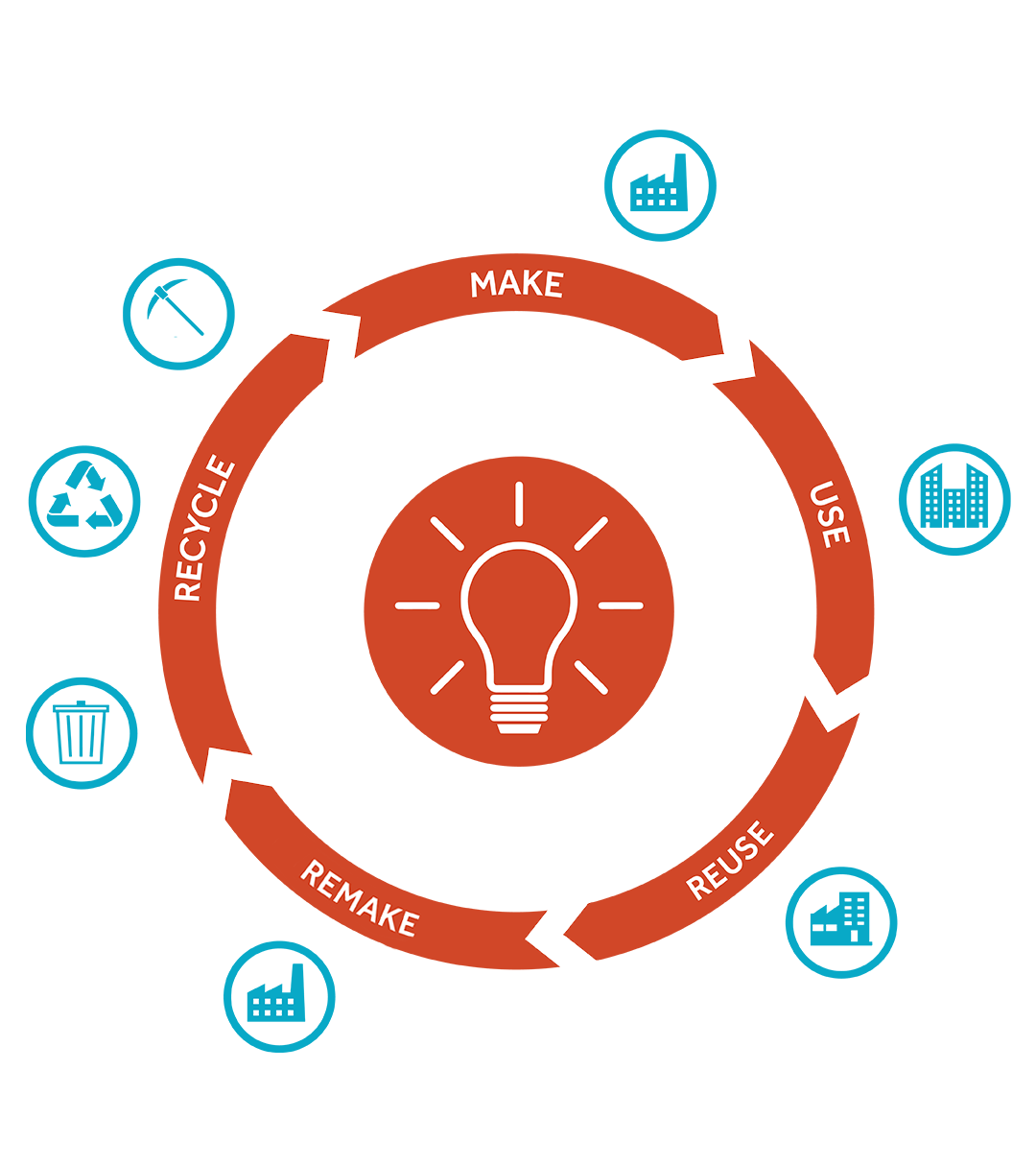The strands of circularity
The role of an independent lighting designer has always been to pull the creative and technical threads of a project together to elevate an experience, improve efficiency and wellbeing, and fill spaces with emotion and character. Over the last decade, this balancing act got a whole lot harder as we’ve found ourselves grappling with another thread – environmental impact.
In our endeavour to design in a more conscious way, we realised that there’s more than one strand to the sustainable lighting design thread and some complicated knots to unravel along the way. Whilst the lighting community has made great progress in recent years to reduce energy consumption and make sustainability intrinsic to the way that we design, the focus has shifted, and the circular economy is now our goal.
 Moving to circularity is one of the toughest tests that we’ve faced as an industry and feels like an almighty knot to unpick. It requires us to consider the whole life cycle of design – from the carbon footprint of the design process itself, through to what happens when a scheme comes to the end of its life – and somehow loop all these elements back to create a circular economy. Thankfully, we found a little bit of light at the end of the tunnel with the arrival of the TM66 Technical Memorandum from CIBSE and SSL.
Moving to circularity is one of the toughest tests that we’ve faced as an industry and feels like an almighty knot to unpick. It requires us to consider the whole life cycle of design – from the carbon footprint of the design process itself, through to what happens when a scheme comes to the end of its life – and somehow loop all these elements back to create a circular economy. Thankfully, we found a little bit of light at the end of the tunnel with the arrival of the TM66 Technical Memorandum from CIBSE and SSL.
Pre TM66, lighting designers struggled to categorise luminaires in the context of the circular economy as this meant either wading through reams of data about materials, manufacturing, and supply chains to build an accurate picture, or accepting that information wasn’t available or forthcoming. In the post-TM66 world, easy-to-use checklists and easy-to-understand ratings turn a highly complex subject into a clear and transparent methodology. It’s been a great leveller for the industry, providing us with a standardised assessment tool and a springboard to greater clarity and responsibility.

In the short space of time that our team has been using TM66, we have felt incredibly motivated as a practice to be more accountable for the luminaires that we specify. Last year, we embedded TM66 into our design process and set ourselves the target of achieving a two and above score for 50% of specified luminaires over a period of six months. We were frustrated at being part of the conversation but not seeing any real momentum for change, so this is our small but significant commitment to making circularity a non-negotiable attribute on our specifications.
Ultimately, it’s about personal accountability and every person finding their own way to strive for better. As long as we keep pushing each other to change the mindset that steady improvements are enough, we’ll move closer to making the circular economy and sustainable lighting design a tangible reality.


